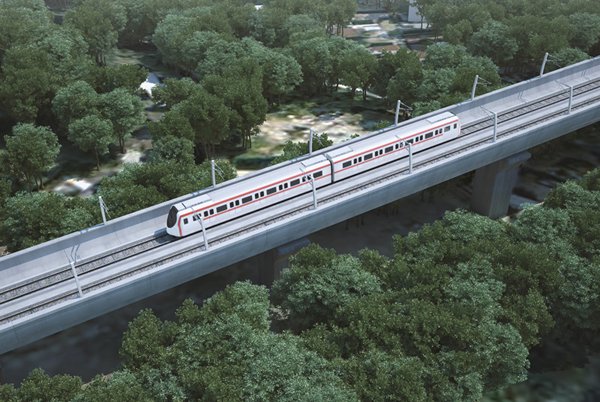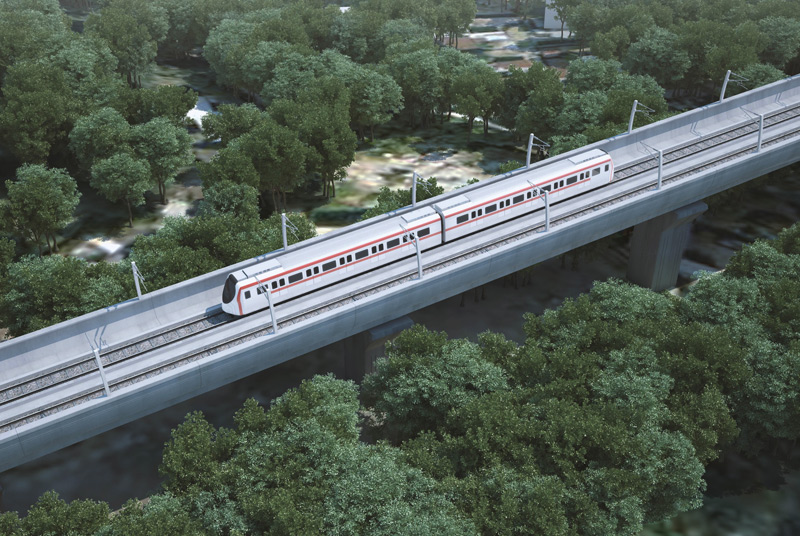BRI Provides Financial Engine for Philippines' Mindanao Rail Link
Work expected to commence imminently on key element of national infrastructure redevelopment programme.

Late last year, the Philippines' National Economic and Development Authority (NEDA) finally gave the go-ahead for phase one of the Mindanao Railway Project (MRP), one of the country's key Belt and Road Initiative (BRI) backed mass transit infrastructure programmes. With this formal endorsement now in place, work is expected to begin imminently on the project – a 102km train line connecting the cities of Digos, Davao and Tagum on the Philippine island of Mindanao. Construction of the Tagum-Davao-Digos segment of the MRP will be carried out by an as-yet-unannounced Chinese contractor in line with the wider objectives of the BRI, China's ambitious global infrastructure development and trade facilitation programme.
Essentially, the Tagum-Davao-Digos line forms the first stage of a proposed 830km project, which has been conceived as ultimately looping around Mindanao, the second-largest island in the Philippine archipelago. It is also the first railway project in the Philippines to be sited outside of Luzon, the country's largest island and home to Manila, the national capital.
Scheduled for completion in 2022, the Tagum-Davao-Digos line is initially projected to handle up to 130,000 passengers a day, with trains travelling at a top speed of 160kph and stopping at six intermediate stations – Carmen, Panabo, Mudiang, Davao, Toril and Santa Cruz. Once fully operational, the service will cut journey times from Tagum to Digos to just 1.3 hours from about 3.5 hours at present, with the Department of Transport predicting that the daily passenger volume will steadily increase, rising to 237,000 by 2032 and to 375,000 by 2042.
Mindanao accounts for two-fifths of the land mass of the Philippines and is seen as badly in need of the economic boost the new rail line is expected to deliver. While the region is the country's primary source of agricultural products, poor transport connections have restricted economic development and deterred investment. It is a problem that has only been exacerbated by years of armed conflict and a series of natural disasters, notably typhoons and earthquakes. As a consequence, although Mindanao is home to just 25% of the Philippines' population, it accounts for 37% of all those living in extreme poverty.
Initially conceived as a twin-track, electrified line, political pressure to complete the Tagum-Davao-Digos railway during the tenure of President Rodrigo Duterte has seen it redesignated as a non-electrified diesel line. As it is located in the south of the country, where Duterte has his political base, it is seen as a particularly sensitive initiative, especially as it has taken so long to reach even this preliminary stage.
In fact, the development of an island-wide Mindanao railway has long been advocated but never before come close to being realised. For his part, Duterte promised to press ahead with the project if elected back in 2015, with NEDA subsequently rubber-stamping the original plans for the Tagum-Davao-Digos section of the line in 2017. Originally intended to be locally financed and to commence construction in 2018, phase one was delayed by a strategic rethink, which also saw the cost dramatically revised upwards. The estimated cost of phase one has more than doubled from the initially proposed PHP35.26 billion (US$695.5 million) to PHP81.69 billion.
This latest figure is expected to be covered by a loan from the China Export-Import Bank (Exim Bank) – due to be signed in April this year – with China now thought to be funding up to 86% of the entire project. With NEDA approval now in place, the next phase will see China submit a shortlist of three companies to bid for the various design-and-build and project contracts. According to local media speculation, the likely contenders are believed to include the China State Construction Engineering Corp, the China Communications Construction Company, the China Railway International Group and the China Civil Engineering Construction Corporation.
Marilyn Balcita, Special Correspondent, Manila





